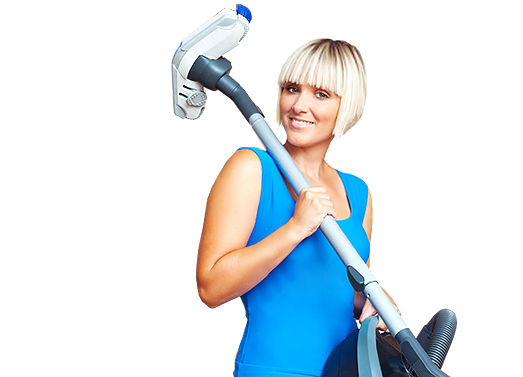Expert Tips for a Mold-Free Bathroom Sanctuary
Posted on 31/05/2025
Expert Tips for a Mold-Free Bathroom Sanctuary
Having a mold-free bathroom isn't just about aesthetics--it's vital for your health and comfort at home. As one of the dampest areas in any household, bathrooms are notorious breeding grounds for mold and mildew. If you desire a pristine, fresh, and truly welcoming bathroom sanctuary, preventing mold is not just recommended; it's essential. This comprehensive guide offers expert advice, practical methods, and proven best practices to keep your bathroom looking--and smelling--its best.

Why Is Mold Prevention Important in Your Bathroom?
Mold in bathrooms can damage walls, tiles, grout, and even structural components of your house. Prolonged exposure to mold and mildew isn't just unsightly--it can result in respiratory issues, allergies, and other health hazards. Well-maintained and mold-free bathrooms increase the longevity of your home decor and essential fittings while ensuring a healthy, pleasant living environment.
Common Causes of Bathroom Mold
- High Moisture Levels: Frequent showers or baths raise humidity.
- Poor Ventilation: Insufficient air flow traps moisture and creates ideal mold conditions.
- Leaky Fixtures or Pipes: Even small drips lead to damp patches ripe for mold growth.
- Residual Water: Standing water on floors, around sinks, or in trays can foster mold and mildew.
Identifying the primary cause is vital. Understanding the variables that promote mold will direct your efforts toward effective solutions.
Comprehensive Mold-Free Strategies for Your Bathroom
1. Maximize Ventilation for a Mold-Resistant Bathroom
Proper ventilation is the first line of defense against bathroom mildew and mold. Good airflow quickly reduces humidity, making mold formation much less likely. Here's how to optimize bathroom ventilation:
- Install or Upgrade Exhaust Fans: Ensure your bathroom has an exhaust fan powerful enough for its size. Run it during and for 15-20 minutes after bathing or showering.
- Open Windows and Doors: Whenever possible, ventilate naturally by opening windows or doors to let in fresh air and speed up drying.
- Leave the Shower Door or Curtain Open: Allow airflow into the shower or bathtub enclosure to evaporate residual moisture quickly.
Bonus Tip:
Clean exhaust fans regularly to maintain efficiency. Dust and debris build-up can drastically reduce airflow, making your mold prevention efforts less effective.
2. Control Humidity for a Mold-Free Bathroom
Mold flourishes when relative humidity consistently exceeds 60%. Managing humidity levels is, therefore, a must. Here are expert tips to keep your bathroom's humidity in check:
- Use a Dehumidifier: In persistently damp climates, a compact bathroom dehumidifier can drastically reduce airborne moisture.
- Monitor Humidity: Use a hygrometer (humidity meter) to regularly check levels. Aim for under 50% relative humidity to remain in a safe zone.
- Quickly Dry Wet Surfaces: After using the bathroom, wipe excess water off tiles, mirrors, and floors to speed up evaporation.
3. Address Leaks Immediately to Prevent Mold
Leaky faucets, showerheads, or pipes transform bathrooms into breeding grounds for unseen mold. Proactive leak management is non-negotiable:
- Inspect Regularly: Check under sinks, around toilets, and near the water heater for any signs of leaks or dampness.
- Fix Promptly: Repair leaks as soon as they're detected. Delaying even minor repairs increases your risk of hidden mold colonies.
- Seal Gaps: Use high-quality caulk to seal joints where tubs, sinks, or showers meet the walls or floors, preventing water seepage.
4. Choose Mold-Resistant Materials
Modern bathrooms benefit from mold-resistant materials designed to withstand persistent moisture. Upgrading to these options offers a long-term defense against mold and mildew:
- Mold-Resistant Drywall (Greenboard): An upgrade over traditional drywall, greenboard is specifically formulated for wet areas.
- Anti-Microbial Paints: Look for bathroom paints with built-in mold inhibitors for walls and ceilings.
- Tile and Waterproof Grout: Ceramic tiles paired with waterproof grout stand up well to repeated water exposure.
- Moisture-Resistant Flooring: Avoid carpeting; choose porcelain tile, luxury vinyl planks, or sealed natural stone instead.
5. Practice Consistent Bathroom Cleaning Habits
Maintenance routines directly affect the likelihood of mold outbreaks. Make your bathroom cleaning schedule non-negotiable with these tips:
- Weekly Deep Cleans: Scrub tiles, grout, tub/shower walls, and all corners with an anti-mold cleaner once a week.
- Clean Shower Curtains and Liners: Machine wash fabric curtains or replace cheap plastic liners regularly to eliminate hidden mold.
- Squeegee After Showers: Quickly remove water from walls and glass doors to minimize standing moisture.
- Clean Around Fixtures: Don't forget faucets, handles, backsplashes, and behind the toilet--mold often hides in ignored crevices.
6. Use Natural Remedies for Mold Control and Prevention
For safe and sustainable prevention, consider natural cleaning agents that destroy mold spores without harsh chemicals:
- White Vinegar: Spritz full-strength vinegar on suspect areas; let sit for one hour, then scrub and rinse.
- Baking Soda Paste: Mix baking soda and water, apply as a paste to grout or damp corners, scrub after 15-20 minutes.
- Hydrogen Peroxide: Use a 3% solution in a spray bottle for tiles and caulking--leave for 10 minutes before rinsing.
- Essential Oils: Add tea tree, eucalyptus, or lavender oil to your cleaning routine--they have natural anti-fungal properties.
Advanced Tips for a Mold-Free Bathroom Sanctuary
Upgrade Bathroom Fixtures for Easy Maintenance
- Choose Wall-Mounted Vanities and Toilets: These create fewer nooks and crannies where water can collect and mold can form.
- Opt for Frameless Glass Shower Doors: Fewer frames eliminate spots where moisture and soap scum typically collect.
- Install Splash Guards: Around bathtubs and sinks to keep water where it belongs and off your floors and walls.
Ensure Effective Drainage
Standing water is a major culprit for mold outbreaks. Confirm proper drainage in all bathroom fixtures:
- Unclog Drains Regularly: Slow drains trap water, increasing the humidity and mold risk; use natural or enzymatic drain cleaners monthly.
- Check Shower Pans and Floor Slope: Professional installation ensures all water flows to the drain effectively and doesn't pool in corners.
Be Mindful of Storage Habits
- Limit Clutter: Store only essentials in the bathroom. Busy shelves, caddies, and baskets retain moisture and restrict airflow.
- Keep Items Elevated: Store bath products and accessories off the floor and away from moisture-prone areas.
- Rotate Towels and Bathmats: Regularly replace and launder all bathroom textiles to stop mildew buildup.
Monitor for Early Signs of Mold Growth
Early detection is key. Familiarize yourself with signs of mold in order to address them before a small problem turns major:
- Watch for Stains: Black, green, or brown discoloration on grout, tile, ceilings, or behind furniture is a direct sign of mold.
- Be Attentive to Odors: Persistent musty smells often indicate hidden mold behind walls or beneath floors.
- Check for Peeling Paint or Wallpaper: Moisture behind the surface may signal ongoing mold activity.
If you notice symptoms, act fast: Address moisture, clean up visible growth, and use anti-mold agents to stop recurrence.
What to Do If You Find Mold in Your Bathroom
DIY Mold Removal
For small, non-porous areas (like tile and grout), DIY removal is practical:
- Wear gloves, a mask, and goggles to avoid direct contact and inhalation.
- Scrub affected surfaces with a solution of one part bleach to ten parts water, or with vinegar/hydrogen peroxide for a natural option.
- Rinse thoroughly and ventilate the room until surfaces are dry.
When to Call a Professional
If mold covers more than 10 square feet, occurs on porous surfaces (like drywall or ceiling tiles), or continues reappearing, it's time for professional intervention. Licensed mold remediation experts use advanced treatments and can address underlying causes beyond surface cleaning.
Maintaining a Mold-Free Bathroom Sanctuary: Long-Term Success
The fight against bathroom mold is ongoing but manageable. With diligence in ventilation, moisture control, regular cleaning, immediate maintenance, and smart material choices, your bathroom can remain a healthy, inviting sanctuary free from mold. Remember, small consistent actions--such as running the fan, wiping down surfaces, and quickly fixing leaks--provide the strongest defense.
Key Takeaways for a Mold-Free Bathroom
- Monitor and control humidity daily.
- Ventilate after every bath or shower.
- Clean thoroughly and consistently.
- Address water leaks and dampness without delay.
- Use mold-resistant materials where possible.
A truly mold-free bathroom sanctuary is well within reach. Apply these expert tips, educate family members, and turn your bathroom into a model of cleanliness and peace--day after day.

Frequently Asked Questions About Mold-Free Bathrooms
Can air purifiers help in a bathroom sanctuary?
Yes--air purifiers with HEPA and charcoal filters remove airborne mold spores, but they complement rather than replace core moisture-control strategies.
How often should I inspect for mold in my bathroom?
It's wise to perform a quick check weekly, with deeper inspections monthly--especially behind toilets, under sinks, and in all corners.
Should I use bleach, vinegar, or hydrogen peroxide for bathroom mold?
All three can be effective--bleach is powerful for non-porous surfaces, while vinegar and hydrogen peroxide are non-toxic and great for routine cleaning.
What's the fastest way to dry my bathroom after a shower?
Run the exhaust fan, quickly squeegee glass and tile, and leave doors or windows open for maximum airflow.
Conclusion
Transforming your bathroom into a serene sanctuary free of mold requires more than just quick fixes. By implementing these expert tips, you'll ensure your bathroom remains fresh, safe, and luxuriously inviting for years to come.
Prioritize prevention, consistency, and timely action to eliminate mold before it becomes an issue.
Your dream of a beautiful, mold-free bathroom sanctuary is entirely achievable--starting today.




